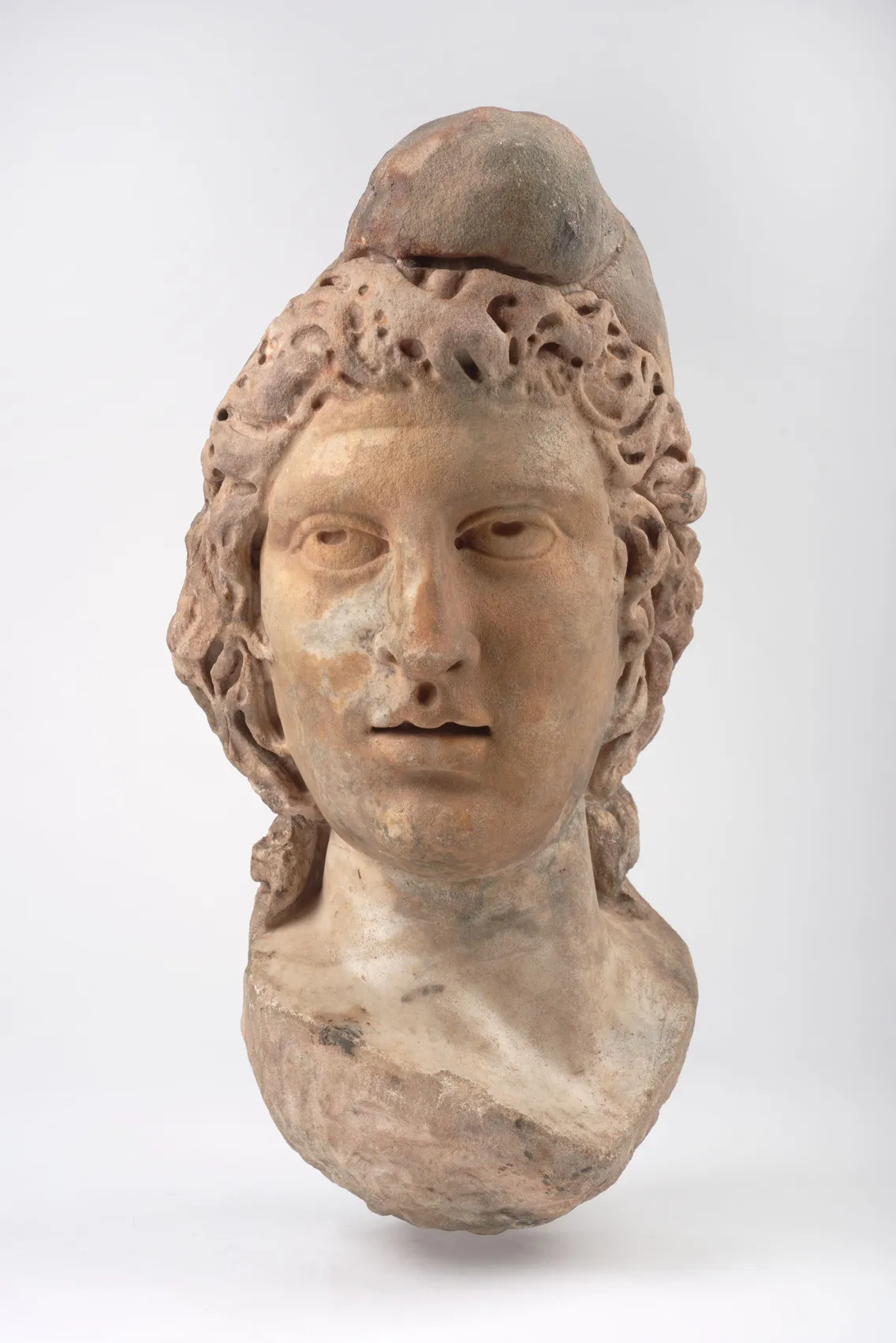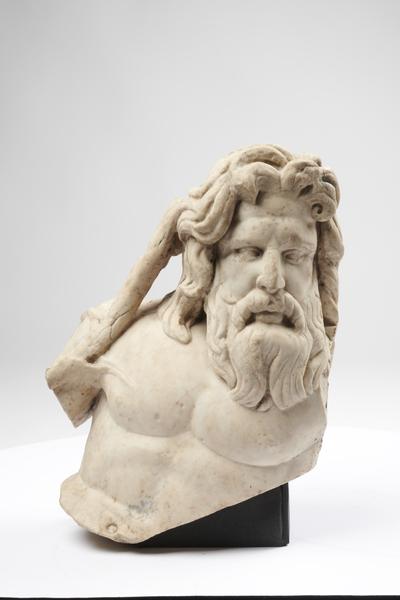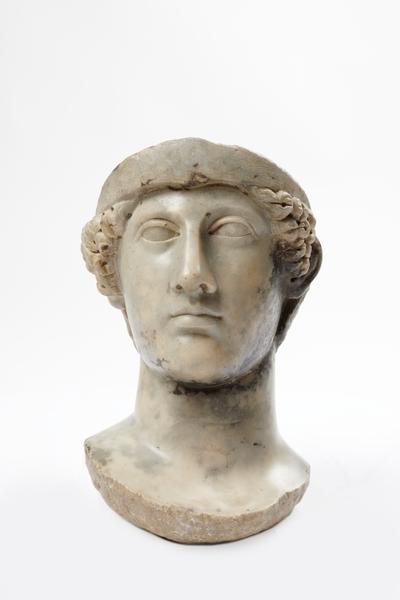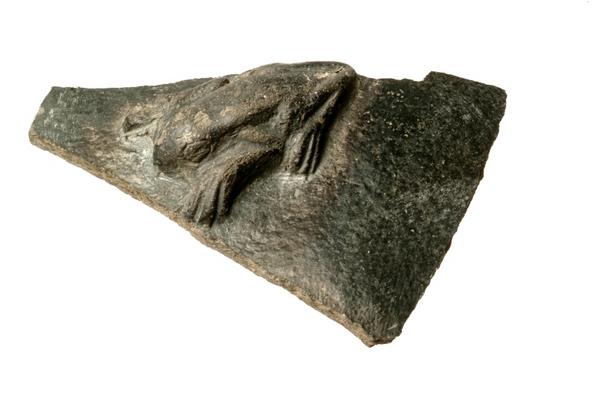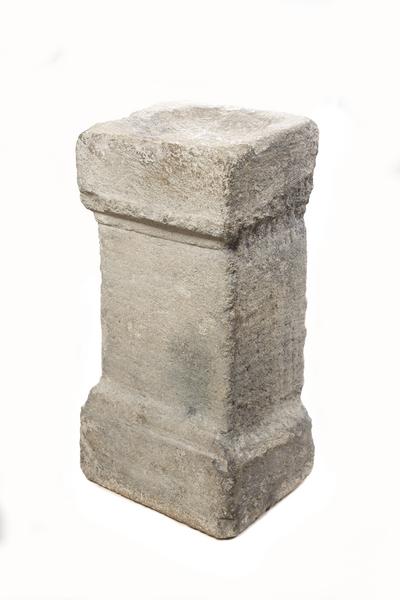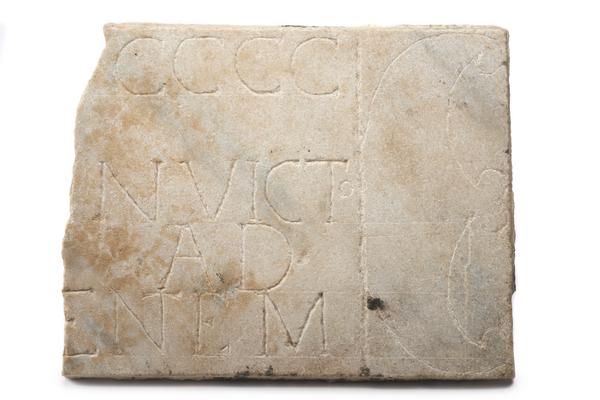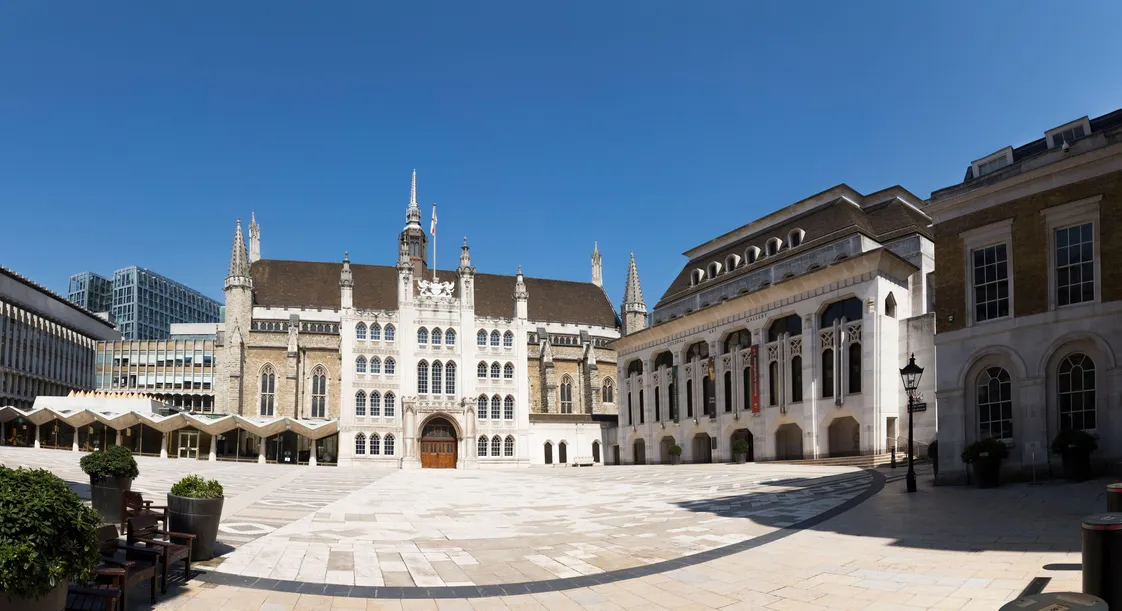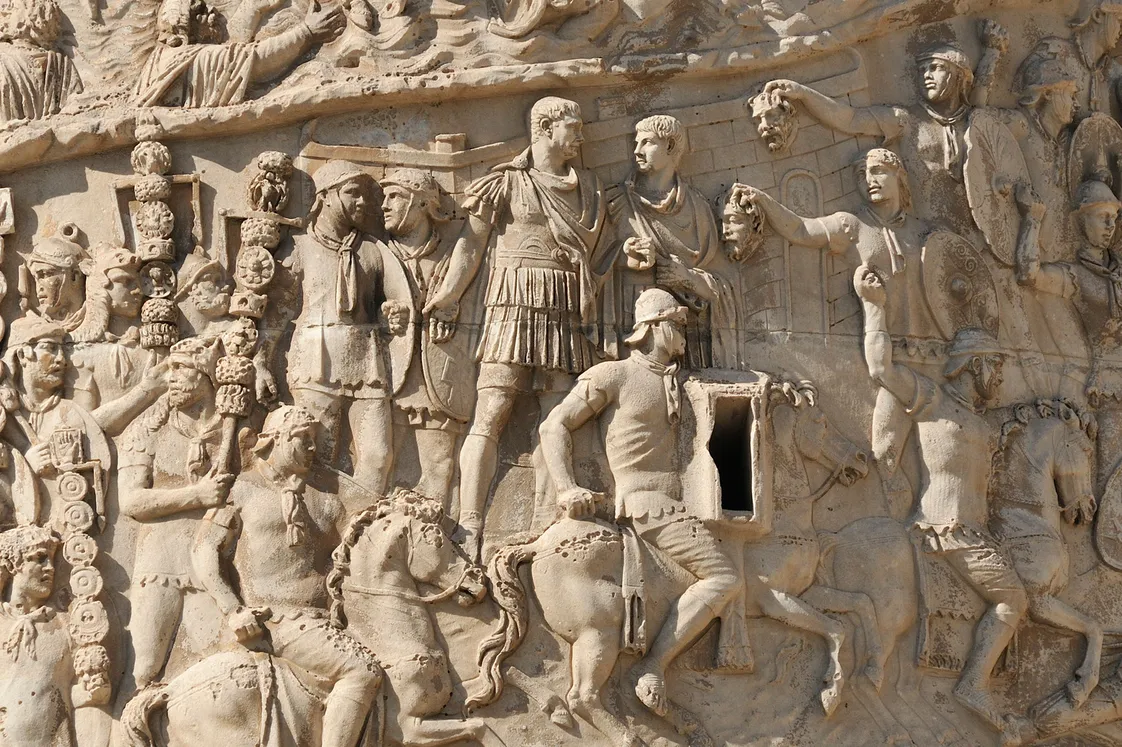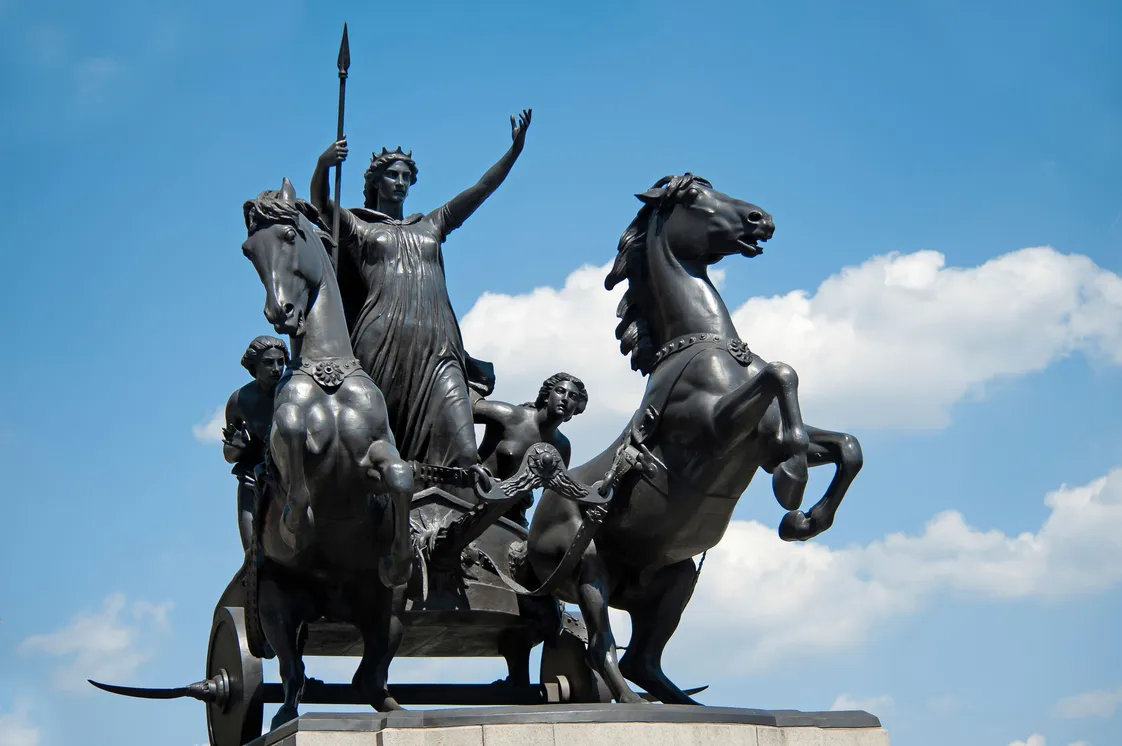Roman London’s Temple of Mithras
In 1954 archaeologists digging in the City of London discovered a Roman temple of Mithras, a bull-slaying god worshipped in secret.
Walbrook, City of London
240–350 CE
A secret temple
The temple of Mithras, also known as a mithraeum, was built around 1,800 years ago, in 240 CE.
Mithras-worshippers were secretive. They left no written records. But the excavations unearthed some tantalising clues to this side of the spiritual world of Londinium.
That includes exceptional marble sculptures of Roman gods – part of the largest collection of marble sculpture ever discovered from Roman Britain.
Given the small amount of evidence about the Mithraic cult from across the Roman empire, the discovery of this temple in London has given us a crucial piece in the puzzle.
“At first the archaeologists didn’t know exactly what they’d found”
The discovery
The City of London was decimated by bombing during the Second World War, 1939–1945. But there was a silver lining – the rebuilding gave archaeologists a rare opportunity to see what lay beneath its streets.
In 1954, archaeologists were digging in Walbrook – it’s a street now, but in Roman times the Walbrook was a river running into the Thames. The original Mithras-worshippers probably chose the site because it was near water, even though it created problems for the builders.
At first the archaeologists didn’t know exactly what they’d found. But on the final day of excavations, the marble head from a statue of Mithras turned up – it’s now in our collection.
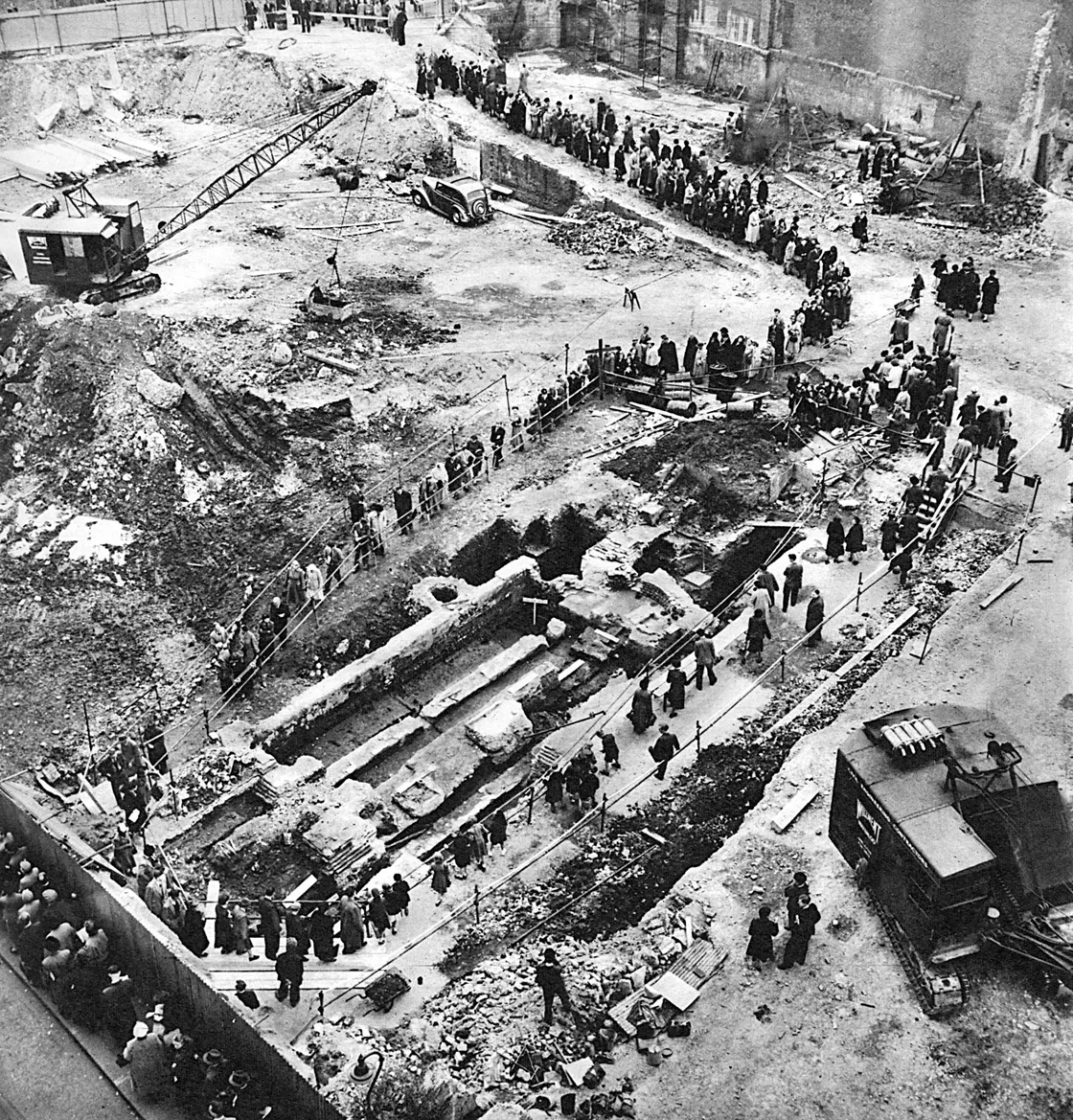
Tens of thousands of people queued to see the discovery in 1954.
Pictures of the statue made the Sunday newspapers, and word began to spread. The public demanded to know what would be done next to protect these sensational finds. Prime Minister Winston Churchill decided to extend the excavations.
For days, tens of thousands of fascinated people queued to see the site. The ruined city lay all around them – but here was something to be excited about after many hard and dangerous years.
Between 2010 and 2014, more excavations were carried out before Bloomberg built its European headquarters on the site. The project also created a reconstruction of the temple close by.
Who was Mithras?
Mithras is a god with roots in ancient Iranian religion. In the Roman empire, Mithras first appears in the 1st century CE. To Roman worshippers, he was an invincible bringer of light and salvation, closely connected to the order of the universe and astrology.
What was the religion like?
The religion was a secret cult for men who valued virtue, honour and courage. It was popular with soldiers, merchants and civil servants.
The cult appears to have travelled through the empire with the Roman army. It spread from Italy, across central and northern Europe, and into Britain throughout the 1st – 4th centuries CE. Another temple of Mithras has been found close to Carrawburgh, a Roman fort on Hadrian’s Wall.
“the god strikes a heroic pose, plunging a dagger into the bull's neck”
Rituals and sacrifice
One of the most impressive finds in our collection is a marble carving of Mithras killing a huge bull. The event it shows is a key part of the god’s story – a heroic deed which banished a dark force, and brought light and life to the world.
In the carving, the god strikes a heroic pose, plunging a dagger into the bull's neck, his cloak flying out behind him. Signs of the zodiac emphasise the cosmic nature of the act. An image like this was the centrepiece of almost every Mithraeum. It was an object of devotion for worshippers, who met to share meals and contemplate their god.
The Mithraic rituals are a mystery, but we do know that followers were organised into seven ranks, with the most senior being Pater, meaning father. This name makes sense, given that Mithraism was for men only.
What did they find in the temple?
Archaeologists found walls, pillars, altars and many amazing sculptures – including the marble head of Mithras.
Our collection of objects from the temple includes a statue of a big-bearded river god, who might represent the Thames itself.
And there are more signs of how important the river was to London’s wealth. In a statue of a Roman genius – a god often used to represent a local area, like London – you can see a ship surfing the waves, and a cornucopia, a symbol of plenty.
There were also statues of the Roman gods Minerva and Mercury, and Serapis, an Egyptian god also worshipped by Romans.
When was the temple built? And who built it?
The temple was built in 240 CE, and was used to worship Mithras until 350 CE.
On the sculpture of Mithras killing the bull there is an inscription. Written in Latin, it translates to “Ulpius Silvanus, veteran of the second Augustan legion, paid his vow: he was initiated at Orange”.
Ulpius Silvanus was probably a major financial backer of the temple. This skillful carving in expensive marble shows just how much money worshippers were willing to donate.
The inscription again shows the connection between the Mithraic cult and the Roman army. The message thanks Mithras for saving Silvanus from danger – allowing him to live out his retirement in Londinium.



